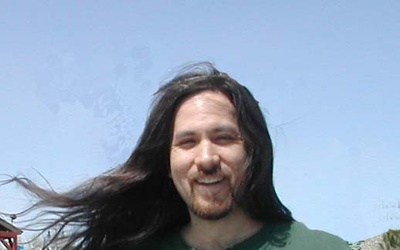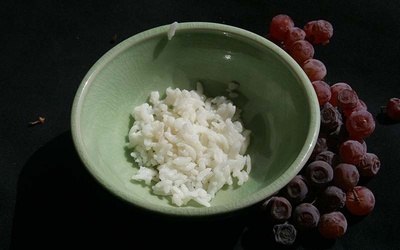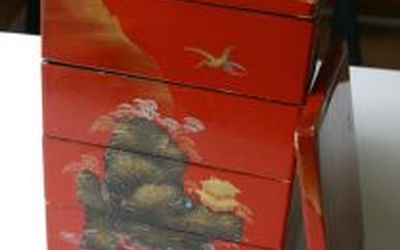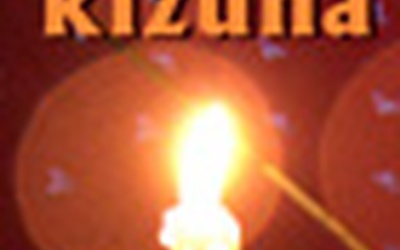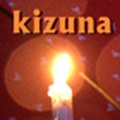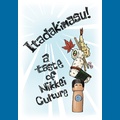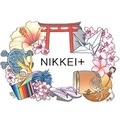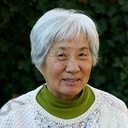
Lily Yuriko Nakai Havey
@Lily_HaveyBorn in Los Angeles, incarcerated at Amache, educated in Boston and Utah, Lily currently lives in Salt Lake City with husband John. She taught school for 13 years and had a stained glass business for more than three decades from which she is semi-retired. She is a watercolor artist and has written a creative autobiography “Gasa Gasa Girl Goes to Camp: A Nisei Youth Behind a World War II Fence,” which will be published by the University of Utah Press in the spring of 2014.
Updated August 2012
Stories from This Author
What Tribe You From, Brother?
Nov. 6, 2013 • Lily Yuriko Nakai Havey
When my son Michael was in high school he was approached by a group of young Navajo men who asked him, “What tribe you from, brother?” “Tribe?” he replied, puzzled. “You look like a Dine from Shiprock.” “Shiprock?” “Yeh, you know, you guys from Shit Rock.” When they slowly started toward him he backed away. “I’m not from Shiprock. I don’t even know where that is,” he said. “Don’t know your own nation, brother?” “You’ve made a mistake. I’m not …
One Grain of Rice
Oct. 11, 2012 • Lily Yuriko Nakai Havey
My mother was always reminding me to eat every grain of rice from my bowl: “Hito tsubu mo nokosanaide tabenasai.” It’s the equivalent of “Clean your plate.” Japanese mothers are just like Jewish mothers in this regard. Well, the stereotypical ones, at least. They command and plead, “Eat it up, you don’t want to end up like those kids.” The implication here was pale and scrawny. Pale and scrawny white or pale and scrawny black. Didn’t matter. You didn’t want …
Food for New Year
July 3, 2012 • Lily Yuriko Nakai Havey
“I can do better than that with one hand tied behind my back,” my father complained, checking out the liver and onions set before him. “Nanda konna meshi? You used the wrong hand.” Then, glancing at my mother’s stricken face, mumbled, “Maybe needs more bacon grease.” “I’m sorry. I’m a bad cook. Tomorrow I’ll make takikomi. You like that.” “Um. Fine.” My mother didn’t have the luxury of conjuring up fancier dishes. Before the war she and my father labored, …
The Wave In the Harbor
May 10, 2011 • Lily Yuriko Nakai Havey
Tsunami—the wave in the harbor. Isn’t that curious and amazing…that the kanji for such a devastating event is 津浪, “wave in the harbor”? We don’t normally visualize a wave being thirty feet high, curling above us—tall as a skyscraper—smashing down on us and obliterating everything beneath it. The waves I experienced at the beaches in Los Angeles before the war [World War II] were benign and soothing. They caressed my body with bubbles and seaweed. They foamed up on my …
Temple 7G - Part 4
Dec. 24, 2010 • Lily Yuriko Nakai Havey
Part 3 >>Before the war we had celebrated Christmas even though we were Buddhists. We exchanged simple gifts and shopped for a tree. One of my mother’s dressmaking clients gave us a special Santa Claus ornament. “Be careful with that,” she cautioned. “It’s hand blown in Germany. It’s valuable.” Why would she entrust us with this, an item of such value? My brother and I added paper ornaments we made at school. I loved the gold and silver Japanese lanterns …
Temple 7G - Part 3
Dec. 17, 2010 • Lily Yuriko Nakai Havey
>> Part 2There were two Buddhist “temples” at blocks 7G and 12G. My mother and I attended the closer one at 7G. For the first few months a table with a bowl of incense sticks served as the altar. I remembered the Los Angeles temple where incense smoke engulfed me as soon as I stepped into the hall. A shimmering gold Buddha dominated the front. We bowed in gassho. My mother told me that the beads on the long rosary …
Temple 7G - Part 2
Dec. 10, 2010 • Lily Yuriko Nakai Havey
>> Part 1Piano practice in Amache was a challenge and was interrupted by more than wind storms. At one afternoon session I heard tapping on the window. Three friends, Eva, Tami, and Katy peeked in. I smiled. Tic, tic, tic. They continued pecking. I glanced up. Tami began to strike the glass with a rock. I cried out, “Stop that!” and doggedly finished my scales. Eva began to sing off key. “Mary had a little lamb, little lamb…” Tami and …
Temple 7G - Part 1
Dec. 3, 2010 • Lily Yuriko Nakai Havey
From the trunk my mother packed in Los Angeles, I retrieved my metronome and my set of “The Scribner Radio Music Library,” each volume lovingly protected with Kraft paper by my mother. The set, as with my piano lessons and the piano itself, were purchased on the “payment plan,” with money that my mother put aside dollar by dollar. I asked her why she had packed them. “So you can practice,” my mother commented. “With no piano?” I asked, half …
Phyla, etcetera - Part 3
Nov. 26, 2010 • Lily Yuriko Nakai Havey
>> Part 2 Unlike summer 's eruption, fall crept in day by day. The sagebrush clung to their dusty gray color but became more brittle. The moths, mosquitoes, and rattlers retreated. We folded and stored the mosquito nets. The jack rabbits were the only animals that I saw regularly, hopping nervously to the fence for the cook's scraps. The coyotes howled less urgently, or perhaps they migrated south. I was told that coyotes, too, fed on the food by the …
Phyla, etcetera - Part 2
Nov. 19, 2010 • Lily Yuriko Nakai Havey
>> Part 1Outside of school we of course played games. The summer heat was a challenge so outdoor games began at dusk. “Annie, Annie, Over,” we chanted as we tossed a tennis ball over a barrack. Eva, Tami, Katy and I usually stood on one side and other friends—and we even let boys play—on the other side. The aim was to catch the ball and dash with it to the other side and tag someone. There was something sinister playing …

